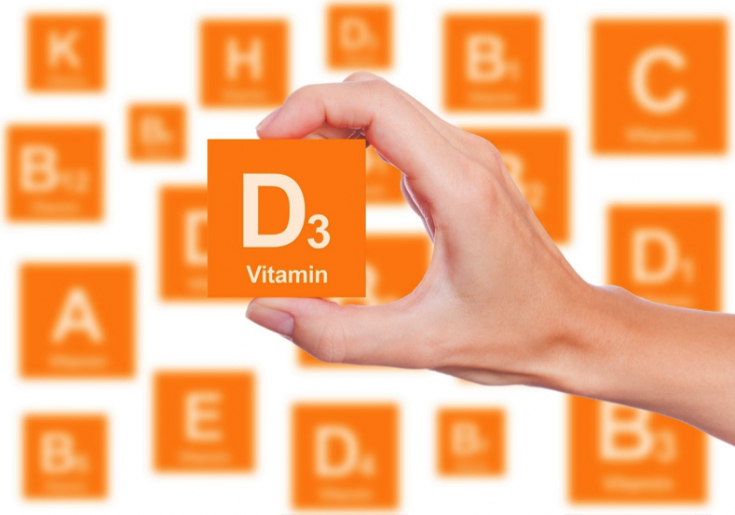Human skin is the place where vitamin D is synthesized and the biologically active form of this vitamin acts. In the skin, vitamin D is involved in a number of processes, from proliferation, differentiation and apoptosis of keratinocytes to support of barrier function and immunoregulation, and therefore this vitamin is used in the treatment many skin diseases.
This article on estet-portal.com presents the non-classical functions of vitamin D in the skin and describes its role in inflammatory dermatological diseases.
- vitamin D: synthesis and function in the skin
- The role of vitamin D in skin physiology
- vitamin D and barrier skin function
Vitamin D: synthesis and functions in the skin
The skin is the first line of defense against infectious agents. It consists of 3 layers: epidermis, dermis and hypodermis, and also has various appendages like hair follicles, sweat, sebaceous and apocrine glands.
Subscribe to our page on Facebook!
The epidermis, in turn, consists of keratinocytes (95%), melanocytes, Langerhans cells (a specialized succession of myeloid dendritic cells) and Merkel cells.
Sex hormone dysfunction in the development of acne
Vitamin D is fat soluble and occurs in two main forms: ergocalciferol (vitamin D2) ─ found most in plants, and cholecalciferol (vitamin D3) which we get from animal products.
The leading source of vitamin D in humans is its synthesis in the skin under the action of sunlight.
The action of ultraviolet (UV) radiation with a wavelength of 290-315 nm on 7-dehydroxycholesterol (7-DHC) leads to the formation of previtamin D, which is subject to thermal isomerization to a more stable form of vitamin D ─ cholecalciferol. The latter undergoes further 2 hydroxyl oxidation reactions. During the first of them, which occurs in the liver, under the action of 25-hydroxylase with vitamin D, a molecule of 25-hydroxyvitamin (25 (OH) D ─ calcidiol) is formed, and during the second (in the kidneys), the influence of 1α-hydroxylase ensures the formation of active vitamin metabolite ─ 1,25-dihydroxyvitamin D (1,25 (OH) 2D ─ calcitriol).

Vitamin D levels in serum are regulated by the state of calcium and phosphorus metabolism, as well as by the effects of parathyroid hormone and fibroblast growth factor. The saturation of the body with vitamin D is estimated by determining the serum level 25 (OH) D ─ the main circulating form. According to the recommendations of the American Endocrinological Society, vitamin D deficiency occurs in the case of a serum concentration of 25 (OH) D < 20 ng / ml (50 nmol / l), and deficiency ─ 21-29 ng / ml (52.5-72.5 nmol/l).
What causes of acne can cause treatment failure?

For a long time, the function of vitamin D was considered to be the maintenance of normal skeletal architecture by controlling calcium and phosphorus homeostasis, however, in the last few decades, other effects of this vitamin have been discovered, including its role in the regulation of cell proliferation, their differentiation, apoptosis, as well as in immune processes. This activity is mediated by the intrinsic vitamin D receptor (RVD), which, after activation, interacts with the retinoid X receptor, forming a heterodimeric complex.
The role of vitamin D in skin physiology
What diagnostic methods in dermatology are of the greatest importance for a specialist?
Vitamin D plays a vital role in the skin: keratinocytes are not only the source of this vitamin, but also the target of its active form. Only these cells are able to synthesize its precursor vitamin. Keratinocytes also express RVD, therefore, they respond to the action of the active form of the vitamin.
Atopic dermatitis in children: treatment features
Vitamin D dose-dependently influences the proliferation and differentiation of skin cells directly and in interaction with calcium, which has been confirmed by many in vitro studies. At a low concentration (≤ 10-9 M) 1,25 (OH) 2D3 enhances the proliferation of keratinocytes, but at a high concentration (> 10-8 M) it inhibits, stimulating differentiation. The latter process by enhancing the synthesis of the structural components of the skin, partly mediated by an increase in the intracellular calcium level, enhanced formation of ceramides and direct stimulation of the RVD.
Vitamin D and skin barrier function
Another aspect of keratinocyte proliferation and differentiation is support of the epidermal barrier and immune function of the skin. Studies have shown that topical application of calcitriol restores the integrity of the skin barrier damaged by the application of a corticosteroid or sodium lauryl sulfate. Vitamin D strengthens the epidermal barrier by enhancing the synthesis of structural proteins of keratinocytes, as well as stimulating the formation of long-chain glycosylceramides, necessary for the formation of a lipid barrier layer.
More useful information on our YouTube channel:







Add a comment